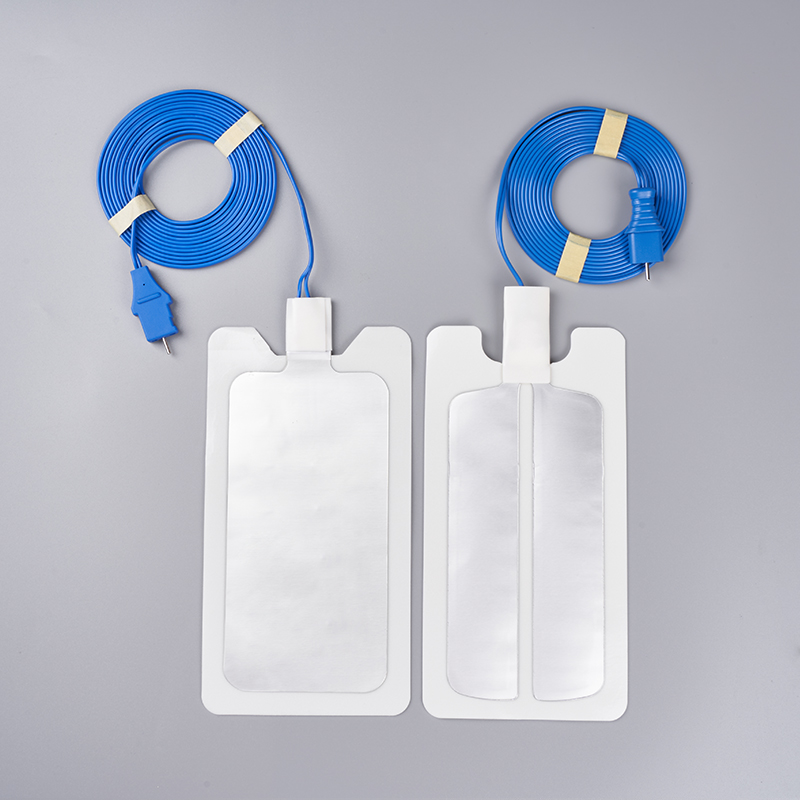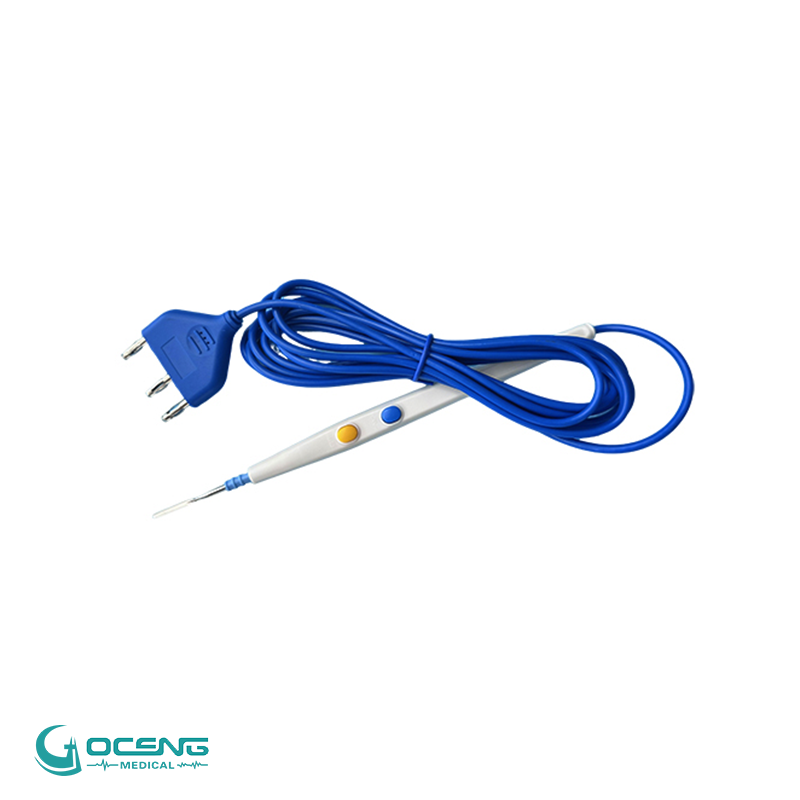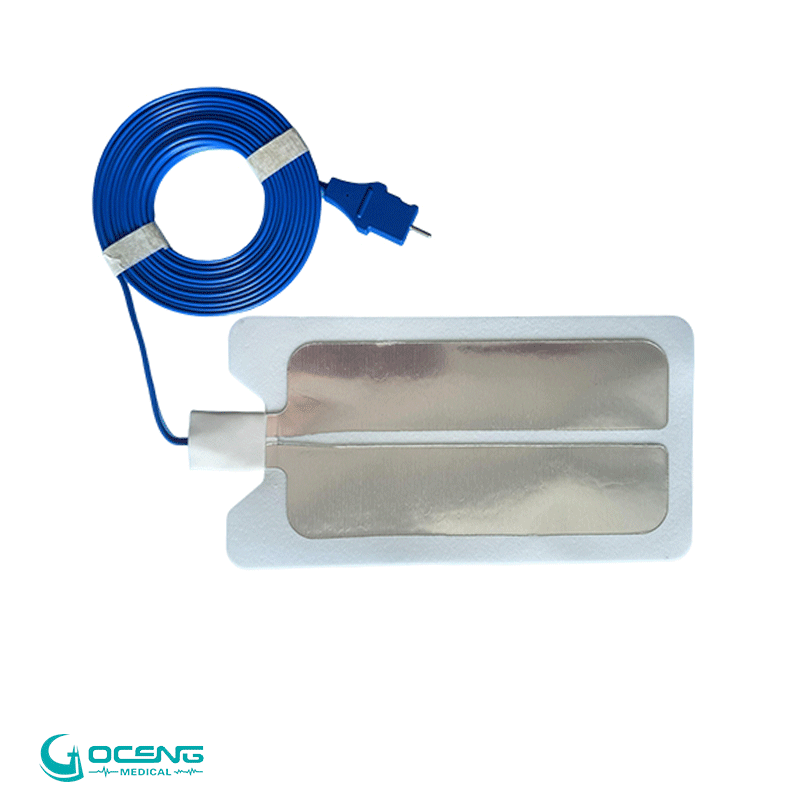It is widely used in electrosurgery with a variety of high-frequency electrotome host and radio frequency instrument, and forms a loop with the positive electrode of the high-frequency electrotome host. It is usually used as a negative electrode in electrosurgery, such as cutting and coagulation.
The negative plate of the universal electroknife (i.e. the ground, neutral electrode) can provide a safe return path for the electrosurgical current. The universal negative plate consists of a conductive adhesive area surrounded by a non-conductive border adhesive. The back of the universal negative plate is fluid resistant. The universal negative plate can only be used once and is a disposable sterile product. The universal negative plate has two configurations with or without a line. The universal negative plate is compatible with electrosurgical devices used in surgery。
The negative plate of the universal electrotome, if used improperly, may cause electrical burning or pressure necrosis. To ensure patient safety, follow these instructions. [2]
1, use the appropriate negative plate, equipment and accessories
2. In order to reduce the risk of burning, do not overload the universal negative plate with too much current.
· Do not activate the electrosurgical device or mobile attachment for more than 60 seconds during any 2-minute period, as this will cause excessive current load on the universal negative pad, causing burns to the patient.
Any combination of high power, long activation time and conductive irritants (such as saline) can cause the universal negative plate to load too much current and cause burns to the patient.
3. Select the right surgical site
· Select a smooth, clearly vascularized, muscular area near the surgical site, allowing full contact between the universal negative plate and the skin.
· The surgical site must be clean, dry and hair-free. Remove hair from the applied area.
· Make the universal negative plate closer to the surgical site than the ECG electrode. l
· Remove metal accessories.
· Avoid landing on bone prominences, metal repairs, or scar tissue.
· Avoid current passing through metal repair or conductive implant points. For patients with implanted electronic devices, contact the device manufacturer to take precautions to avoid interference.
· Do not use universal negative plates in areas where liquids are concentrated.
· Do not use a universal negative pad at the injection site.
· Select an appropriate surgical location away from all warning facilities.
4, negative plate use
· Check universal negative plates, wires and cables. Do not use if there are any signs of cutting, modification or damage.
· Press one end of the universal negative plate smoothly to the other end. Avoid creating internal bubbles.
· Avoid stretching or folding universal negative plates or patient skin.
· Do not use conductive adhesive.
· Do not wrap the universal negative plate completely around the straight arm. Do not overlap.
· The universal negative plate shall not be repositioned after the first application. If the patient is repositioned, confirm that the negative plate is in full contact with the skin and that all connections are intact.
· Do not place the elastic socks or equipment on the universal negative plate.
· Do not wrap wires or cables around straight arms or metal objects.
· Do not place wires or cables on or under the patient's body.
· Do not clip the cable to the patient's body.
5, negative plate removal
· Do not remove by pulling cables or ropes.
· Start at the corner. Slowly peel and roll horizontally to avoid skin trauma.



